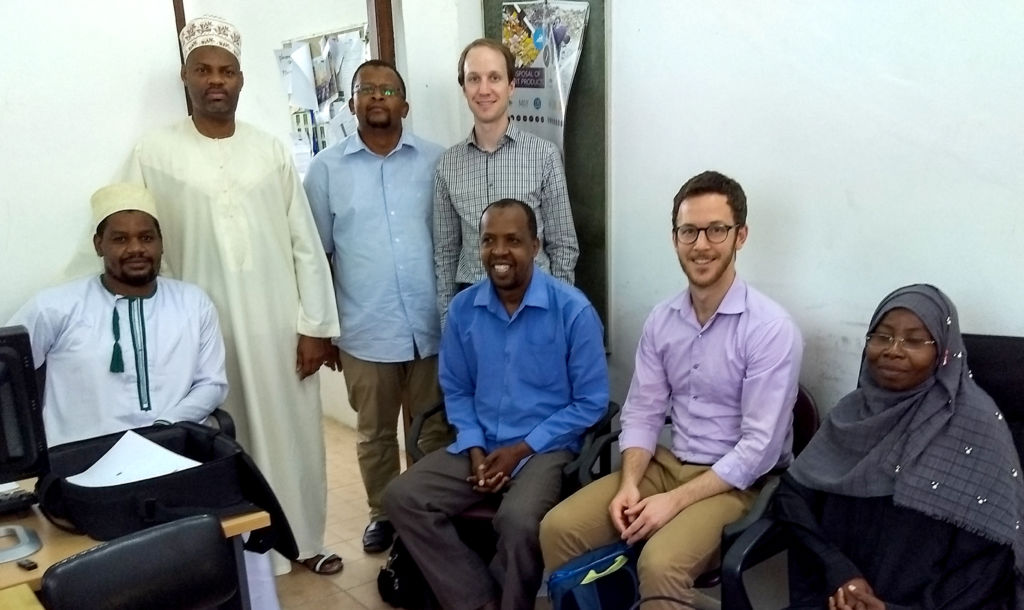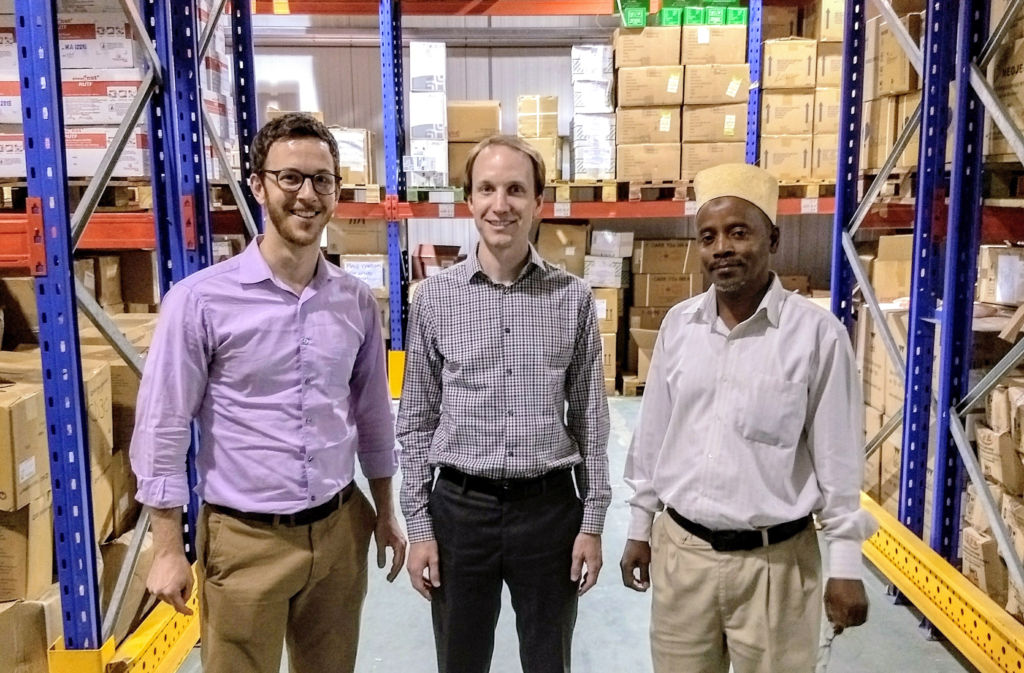Q&A: Adapting Business Strategies for Better Healthcare Supply Chains
Monday, July 8, 2019

Q & A
with Michael Krautmann
Research Manager in WDI’s Healthcare sector
1. What is the goal or focus of the supply chain work performed by WDI’s Healthcare sector?
Our team works to improve the quality and accessibility of financially sustainable healthcare for people in low- and middle-income countries (LMICs), and supply chains are a critical component of those systems. To provide high-quality healthcare, you must be able to deliver medicines efficiently and reliably to the places where patients actually seek care. Many LMIC health systems struggle with this task. Walk into a random primary health clinic and you will often find that their pharmacy is stocked out of numerous medicines they normally offer. The health impact of these stockouts can be severe: increased mortality and morbidity for patients pushed onto less effective antibiotics and antimalarials; unwanted pregnancies from women forced to switch or delay contraceptive use; and, increased drug resistance for tuberculosis patients and others whose treatments are interrupted. The goal of WDI’s health supply chain work is to minimize these stockouts and their health consequences, and we do this by providing key stakeholders—governments, donor agencies, and companies—with the business tools, strategies and analyses they need to make effective supply chain decisions.
2. What are some of the challenges that government ministries and others face when it comes to delivering needed medicines and supplies?
For public sector health supply chains, many of the most difficult underlying challenges involve the structure and interactions of the organizations themselves. For example, financing for supply chain activities is often fragmented between multiple government and donor sources acting in isolation, even when the products themselves travel a nearly identical path to the patients. These funding sources may not match the actual funding need when aggregated together; they may be disbursed at conflicting times; in many cases they are subject to the whims of national politics and economic conditions. For on-the-ground managers, this structure creates both day-to-day cash flow problems and long-term planning/budgeting problems.
Decision-making and accountability structures are often similarly fragmented. For political reasons, supply chain functions are often divided across multiple government entities, and in some cases donor or partner organizations also play a direct role. Thus, it may not always be clear who is responsible for achieving a given supply chain outcome, and hard to hold someone accountable for that outcome if they are part of a separate ministry or organization.
Another key challenge area is human resources. Often, healthcare workers are tasked with completing local-level supply chain duties such as managing inventory, calculating and transmitting orders, or even traveling to collect supplies. This approach causes two main issues. First, these same workers are often the primary clinicians at their facilities, so tasking them with supply chain responsibilities takes them away from actual patient care. Second, a typical public health system might easily have 10,000 or more workers at 5,000 facilities, spread across the most remote areas of the country. Training, funding and supervising such a large and diffuse cohort would be a major challenge for any organization.
The types of problems that people typically associate with logistics in Africa—poor road networks and electricity infrastructure—serve mainly to exacerbate these underlying structural challenges. They increase the cost and time required to collect data and distribute products, putting additional pressure on an already under-resourced system.

Krautmann (second from the right) and WDI’s Ben Davis (fourth from left/standing) with Zanzibar Ministry of Health’s Supply Chain Management Unit.
3. Are these challenges faced in global health supply chains different than those faced by businesses like Amazon and FedEx?
Some of the challenges are the same. Bad roads, for example, increase transportation cost and lead time for everyone, regardless of whether they are public or private organizations. Where electricity and computerized systems are scarce, everyone must get creative with how they collect and manage data. And everyone is competing for the same pool of qualified talent to run their operations.
But many of the challenges I’ve mentioned are unique to a public sector system and its complex political dynamics. For example, companies can focus only on the most profitable products or delivery locations, but ministries of health have a political mandate to provide healthcare to everyone, regardless of location or ability to pay. While companies have broad flexibility in who they hire and where they place warehouses and pharmacies, ministries of health already have major sunk investments in national, regional and local administrative infrastructure. They face intense political and financial pressure to use that infrastructure for supply chain, even though it may result in a less effective or efficient system. Finally, companies can generally make decisions solely based on the financial implications, while ministries must also factor in the political implications of any decision they make.
Much of our work focuses on adapting existing business toolkits like lean thinking, collective impact and capabilities system frameworks to help organizations develop more effective supply chain strategies.
Michael Krautmann4. How does WDI’s Healthcare sector team work help address these challenges?
Our Healthcare sector team uses business principles and tools in various ways to address these types of challenges. We have developed new tools that make it easier to assess supply chain design efficiency, and to use design as a lever to address underlying organizational challenges. For example, the traditional approach to addressing challenges with human resources or financing mechanisms is to address them head-on, e.g. through new training methods or financial management reform. But you can also adjust the structure of your supply chain to minimize those problems, e.g., by shifting responsibilities from diffuse health facility staff to a more centralized and dedicated logistics team. Our tools help people quickly identify and articulate these improvement opportunities so that they can more easily build political and financial support.
Much of our work focuses on adapting existing business toolkits like lean thinking, collective impact and capabilities system frameworks to help organizations develop more effective supply chain strategies. A well-designed strategy can help organizations address the types of structural challenges I mentioned above by aligning stakeholder incentives, coordinating supply chain investments, identifying and developing core supply chain capabilities and advocating for key supply chain initiatives and outcomes. Finally, we have also assisted private sector clients with product demand forecasting and market entry strategy research, with the goal of improving local markets for quality products and service providers.
We are not an implementing partner with long-term boots on the ground in any one location, but we can serve as a strategic advisor to such organizations by offering a neutral, independent academic perspective, expertise in a range of supply chain and operations methods and experience working in diverse geographies and contexts.
5. How do you see these challenges and solutions evolving over the next 5–10 years?
Over the next 10 years, LMIC health systems will likely experience major growth in demand for health products driven by rising rates of non-communicable diseases such as cancer and diabetes, and by increasingly affluent and connected populations demanding universal health coverage from their governments. This demand growth will strain existing health supply chains, and will force health systems overall to adapt and become more efficient.
One initial way I think governments can adapt is to shift towards procuring supply chain services from external logistics providers rather than operating their own warehouses and trucks. This makes sense from a technical perspective—consolidating all those thousands of scattered budget line items and management tasks down to a single big contract and budget line can greatly simplify all the financing, management and accountability challenges mentioned above. There are very real technical and political risks to manage in making such a move, but I believe that rising patient demand, combined with the emergence of successful real-world examples, will prove to be a catalyst for change.
In the longer term, many LMIC health systems and supply chains can achieve greater efficiency and scale by better integrating public and private healthcare channels, but to achieve this will require significant new investments and redesign efforts. For example, we can streamline public sector operations by working around areas that private channels are already serving effectively, but we must invest in the data infrastructure to understand which locations and products already have quality and affordable private providers. We can expand patient choice by subsidizing privately distributed products, or by incentivizing companies to serve remote communities, but this will require developing new public-sector incentive structures and financing mechanisms, such as social health insurance or payment vouchers. These are the type of investments that will likely be necessary to keep pace with growing health product demand.

Krautmann (left), Davis (center) and manager of a medical commodities warehouse in Zanzibar.

Michael Krautmann is a research manager with WDI’s Healthcare Initiative. His supply chain work focuses on modeling, investment decision-making, and strategy development to improve the operational efficiency and service level of public health supply chains.
While at WDI Krautmann has helped develop several tools that inform key elements of the supply chain strategy development process: 1) quantifying stakeholder priorities and their impact on complex, multi-objective strategy decisions, 2) quickly modeling the cost and efficiency of customized supply chain design scenarios, and 3) aligning key components of supply chain strategy and country context. He authored a policy paper examining structural challenges in health system financing and how they impact vaccine supply chain effectiveness. Krautmann has also conducted strategic evaluations of supply chain programs in Togo and Tanzania, helping client organizations improve their approach for delivering health products and providing technical assistance.
Prior to joining WDI, Krautmann worked for Lean Care Solutions, a healthcare technology startup that uses predictive analytics to help hospitals improve patient scheduling and postoperative care. He also served as a Peace Corps volunteer in Zambia, where he evaluated clinic-level health supply chain practices and worked with health system leaders to improve data analysis and continuous improvement practices. Krautmann has master’s degree and a bachelor’s degree in industrial and operations engineering from the University of Michigan.
